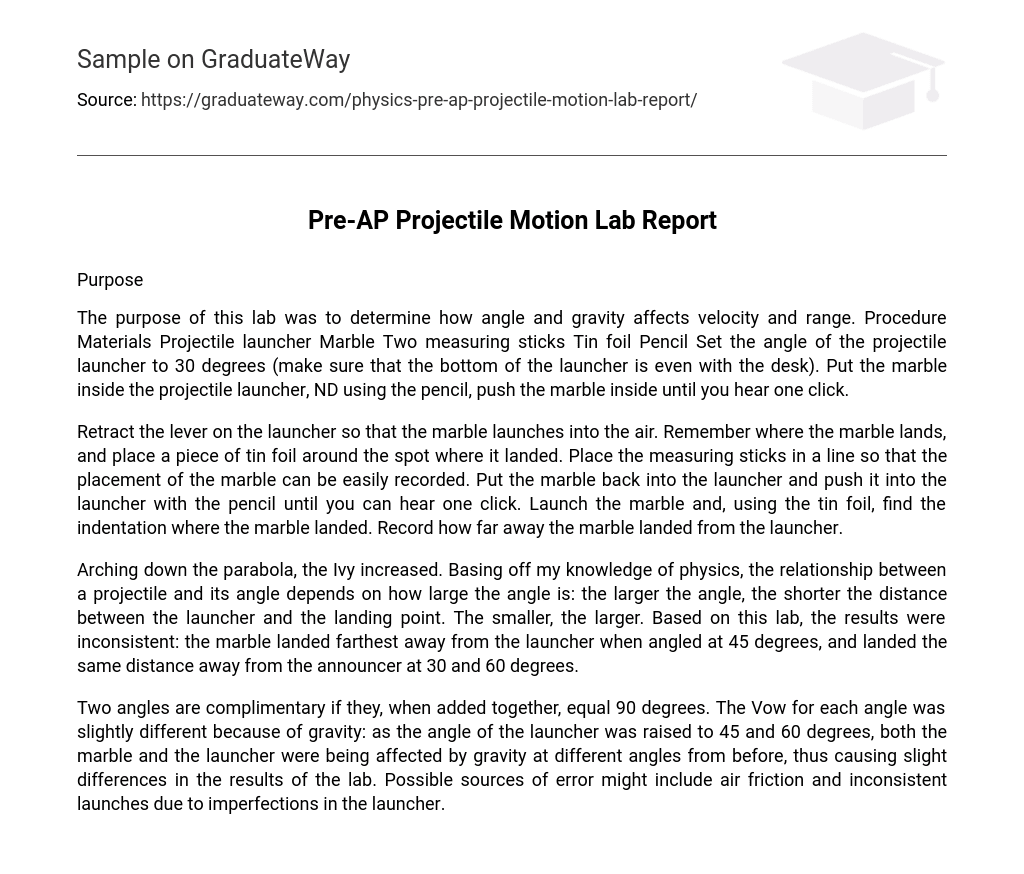Purpose
The purpose of this lab was to determine how angle and gravity affects velocity and range. Procedure Materials Projectile launcher Marble Two measuring sticks Tin foil Pencil Set the angle of the projectile launcher to 30 degrees (make sure that the bottom of the launcher is even with the desk). Put the marble inside the projectile launcher, ND using the pencil, push the marble inside until you hear one click.
Retract the lever on the launcher so that the marble launches into the air. Remember where the marble lands, and place a piece of tin foil around the spot where it landed. Place the measuring sticks in a line so that the placement of the marble can be easily recorded. Put the marble back into the launcher and push it into the launcher with the pencil until you can hear one click. Launch the marble and, using the tin foil, find the indentation where the marble landed. Record how far away the marble landed from the launcher.
Arching down the parabola, the Ivy increased. Basing off my knowledge of physics, the relationship between a projectile and its angle depends on how large the angle is: the larger the angle, the shorter the distance between the launcher and the landing point. The smaller, the larger. Based on this lab, the results were inconsistent: the marble landed farthest away from the launcher when angled at 45 degrees, and landed the same distance away from the announcer at 30 and 60 degrees.
Two angles are complimentary if they, when added together, equal 90 degrees. The Vow for each angle was slightly different because of gravity: as the angle of the launcher was raised to 45 and 60 degrees, both the marble and the launcher were being affected by gravity at different angles from before, thus causing slight differences in the results of the lab. Possible sources of error might include air friction and inconsistent launches due to imperfections in the launcher.





